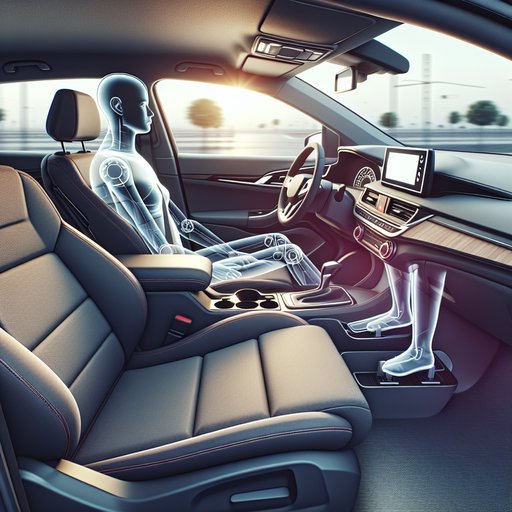
We spent a week in a 2025 Subaru Forester Touring to evaluate everyday ergonomics for drivers of different heights, focusing on seating, visibility, pedal reach, steering adjustment, and blind spots in real-world commuting and highway conditions.
Our test car is a 2025 Forester Touring with Subaru’s 2.5-liter flat-four (182 hp, CVT, AWD). Curb weight sits around 3,500 lb, and vision-friendly glass area remains a Forester hallmark. We evaluated the driving position with three testers: 5'2", 5'10", and 6'5", over 320 miles of city, highway, and night driving with rain and bright sun to probe glare and mirror effectiveness. The Touring trim brings a 10-way power driver’s seat with 2-way power lumbar, heated front seats, and a tilt/telescoping steering wheel.
Seat cushion tilt is adjustable, and there’s a broad dead pedal. Driver aids included blind-spot monitoring, rear cross-traffic alert, and EyeSight with lane centering—useful for context but our focus remained on fundamentals you feel every mile. Seating: The 5'2" driver achieved a proper arms-bent posture without sitting uncomfortably close to the wheel; the height adjust lifts enough to see over the hood while keeping thighs supported. The 5'10" driver found a neutral knees-bent position with the cushion slightly pitched up to relieve hamstring pressure.
At 6'5", headroom remained acceptable with the seat near its lowest setting, but the cushion could use an extra inch of length for long legs; the lumbar support was well-placed for all three, and lateral bolstering is mild for easy entry/exit. Pedals and reach: Accelerator and brake spacing is generous, and the dead pedal allows solid bracing under hard stops. The 5'2" driver could fully depress the brake without the seat back becoming too upright, and heel-toe style foot rotation (for those who care) is feasible thanks to consistent pedal heights. The tallest driver noted slight contact between the right knee and the console on long stints, but no interference with pedal modulation.
Importantly, there’s no need for pedal extenders for shorter drivers—seat travel and tilt cover it. Steering adjustment and visibility: The wheel’s tilt/telescoping range let each driver place wrists on top of the rim with shoulders back, maintaining clear sight of the cluster. Visibility remains a Forester strength: slim A-pillars for the class, tall side glass, low cowl, and large quarter windows reduce front and rear three-quarter blind spots. The 5'2" driver preferred the seat at maximum height plus a modest telescopic pull; the 6'5" driver ran the wheel fully out and one notch up to clear thighs without obscuring gauges.
Mirrors are large, and the convex cut-out on the driver’s side helps close gaps. Blind spots and tech aids: Over-shoulder checks are unusually effective for a crossover; the rear pillars are not overly thick, and the rear headrests fold to widen the view. Blind-spot monitoring triggers early but rarely false-alarms, and the standard rear camera has good low-light clarity. If you’re tall, set the head restraint one click down to avoid blocking upper rear visibility; if you’re short, raise the seat rather than the wheel to keep the airbag and sightline geometry optimal.
Verdict: The 2025 Forester excels at fitting a broad range of body types with minimal compromise. Shorter drivers get confident sightlines without perching, average-height drivers settle in effortlessly, and very tall drivers will want for a longer cushion but still find space and headroom. For the best fit, choose a trim with power seat and lumbar; add memory if multiple drivers share the car. If you prioritize an even longer seat base, consider cross-shopping Honda CR-V or VW Tiguan, but for all-around ergonomics and visibility, the Forester remains a benchmark.












